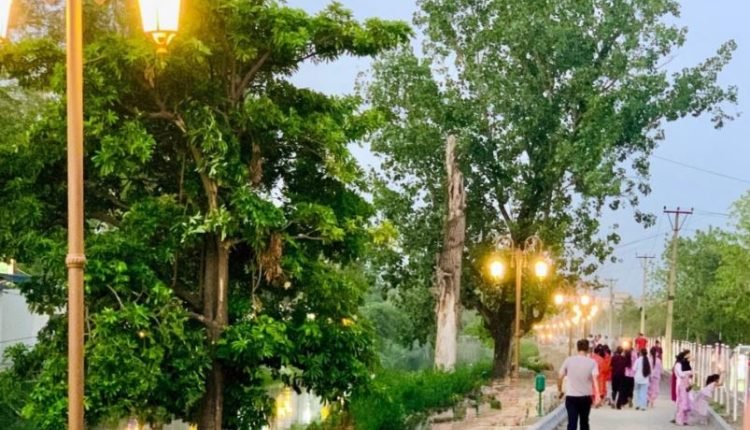Building resilient cities has become an imperative for emerging regions striving to balance rapid urbanization with environmental sustainability and cultural preservation. The Kathua Waterfront project stands out as a noteworthy example of how thoughtful urban development can simultaneously address ecological challenges, foster social inclusion, and celebrate local identity. Situated along a 1,200-meter stretch of the Kathua Canal in the heart of the city, this ambitious initiative not only transforms a public space but also sets a benchmark for how smaller cities can approach modernization without losing their unique cultural fabric.
Urban resilience is no longer limited to constructing robust physical infrastructure; it now demands integrating climate-responsive design and sustainable practices that safeguard ecosystems while enhancing citizens’ quality of life. The Kathua Waterfront exemplifies this approach. Incorporating green spaces, improved water management systems, and upgraded sanitation infrastructure, the project reflects a commitment to environmental stewardship. By prioritizing biodiversity and introducing soakage pits and enhanced water supply systems, the city can help confront climate-related risks such as flooding and water scarcity. These eco-sensitive measures are vital for emerging regions like Kathua, where urban growth often outpaces the development of resilient infrastructure. At the same time, the waterfront fosters inclusivity by creating spaces that encourage community interaction and wellness. With dedicated walking, cycling, and skating tracks alongside yoga spots and a vibrant food street hosting restaurants and cafes, the development caters to diverse age groups and interests. Such a multifunctional design is essential for cultivating a sense of belonging among residents and promoting healthy lifestyles. Moreover, the project has generated direct employment opportunities for around 150 individuals, many of whom are women, thus contributing to economic empowerment and gender inclusion. This aspect underscores the importance of viewing urban projects not just as physical upgrades but as catalysts for social upliftment. What distinguishes the Kathua Waterfront is its grounding in the city’s cultural and historical identity. Urban development often risks erasing local heritage in the pursuit of modernization, but this project consciously integrates elements that reflect Kathua’s unique soul. The revitalization of public spaces along the historic canal creates a living narrative that connects past and present, nurturing community pride and inspiring new aspirations. By enhancing the city’s livability and aesthetic appeal, the waterfront invites residents and visitors alike to engage more deeply with Kathua’s cultural legacy. This alignment of infrastructure with identity is crucial for preserving the intangible qualities that define any city. The Kathua Waterfront also serves as a timely reminder of the broader vision needed for urban growth across emerging regions. Smaller cities often struggle to compete with metropolitan hubs for investment and development attention, yet they play a critical role in regional economies and cultural landscapes. It encourages other cities to embrace healthy competition, spurring continuous improvements in infrastructure and public amenities that directly enhance citizens’ lives. Importantly, the success of this initiative reflects effective governance and strategic planning. The project embodies a model of urban rejuvenation that is participatory, sustainable, and forward-looking. The incorporation of an Integrated Command and Control Centre exemplifies how technology can support efficient city management and safety. It also highlights the value of partnerships between government agencies, civil society, and local stakeholders in translating vision into reality. Such collaboration is indispensable to ensuring that development efforts remain responsive to community needs and adaptable to future challenges. The project demonstrates that resilience is multidimensional, encompassing environmental safeguards, social cohesion, economic opportunities, and cultural continuity. These components must be woven into every stage of urban development to create cities that are not only functional but also vibrant and meaningful to their inhabitants. Looking ahead, the Kathua Waterfront should inspire a renewed focus on creating urban spaces that prioritize human well-being alongside ecological balance. It signals a shift away from purely utilitarian infrastructure towards environments that nurture creativity, connection, and care. For smaller cities aspiring to modernize without losing their identity, Kathua’s approach offers a valuable blueprint. It proves that with vision, commitment, and inclusive planning, emerging urban centers can build resilient futures that honour their heritage and meet the demands of a changing world.
Finally, the Kathua Waterfront project is more than a physical transformation—it brings hope and momentum for cities navigating the complexities of growth and sustainability, reminding us that the foundation of a strong city lies in its people, its environment, and its spirit. To build resilient and vibrant cities, Jammu district should accelerate pending projects like the Tawi River Front development with renewed focus and intensity. These initiatives are vital not only for addressing climate and social challenges but also for creating inclusive public spaces where communities can connect, thrive, and take pride in their city’s identity. Prioritizing sustainable urban development will ensure Jammu evolves into a lively, environmentally conscious hub that meets the needs of its residents today and for generations to come.
-From the Bold News Editorial Desk




